5 Keys to Improving Ocean Health
This week marks the 40th anniversary of the primary law that governs fishing in U.S. ocean waters: the Magnuson-Stevens Act.
In 1976, Senators Warren Magnuson (D-WA) and Ted Stevens (R-AK) worked together on a bill that for the first time established American jurisdiction over fishing in the ocean out to 200 miles offshore. Signed by President Gerald Ford on April 13 of that year, the new law promoted domestic fishing and conservation of fish resources.
A lot has changed since then: Scientific knowledge, fishing capacity, technological advancements, persistent and emerging threats to marine resources, and fundamental changes in the oceans themselves demand a more comprehensive, ecosystem-based approach to managing and conserving ocean fish populations. Congress periodically reauthorizes the law and, in doing so, sometimes amends it to reflect new knowledge about fisheries.
The law is now up for reauthorization. This is a prime opportunity for political leaders to come together to update the law to meet the challenges of the 21st century.
For each of the past 40 weeks, we’ve shared stories about U.S. oceans—the people who fish them, the places that give them character, and the remarkable marine life within them. Those stories reveal that many fishermen, scientists, entrepreneurs, and fishery managers across the country are leading the way in putting a comprehensive approach to work on the water. Their efforts are producing significant improvements, showing that it’s essential for Congress to support and broaden this positive impact by adopting a big-picture approach that’s consistent and shared across all U.S. ocean territory.
But what does that mean in practice? Here are five key areas of focus.
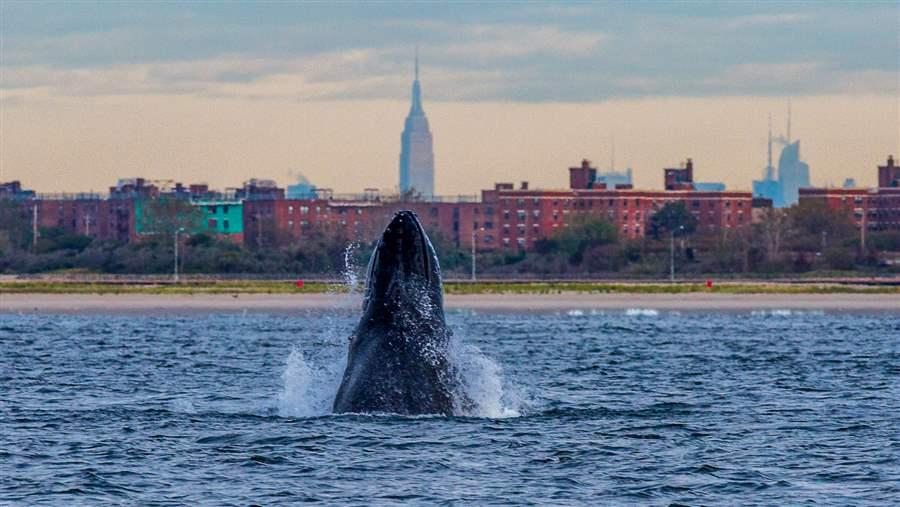 © Artie Raslich
© Artie RaslichThe humpback whale "Rockaway Jerry" breaches while enjoying a forage fish meal in the Atlantic Ocean near New York Harbor, with a view of Manhattan on the side.
Protect forage fish
Small schooling species of forage fish such as menhaden, sardines, and herring don’t draw the fawning attention afforded to bigger ocean wildlife. The humpback whale pictured above, dubbed Rockaway Jerry, became an Internet sensation in 2013 after this photo was taken.
Humpbacks can eat as much as 1,000 pounds of forage fish a day. Experts say Rockaway Jerry was feasting on a large school of menhaden when the now-famous photo was shot. Whales are just one of the myriad marine species that rely on forage fish for food. The Magnuson-Stevens Fishery Management and Conservation Act should be strengthened to require science-based catch limits for forage fish that ensure abundant food sources for seabirds, marine mammals, and bigger fish such as Pacific salmon and Atlantic cod.
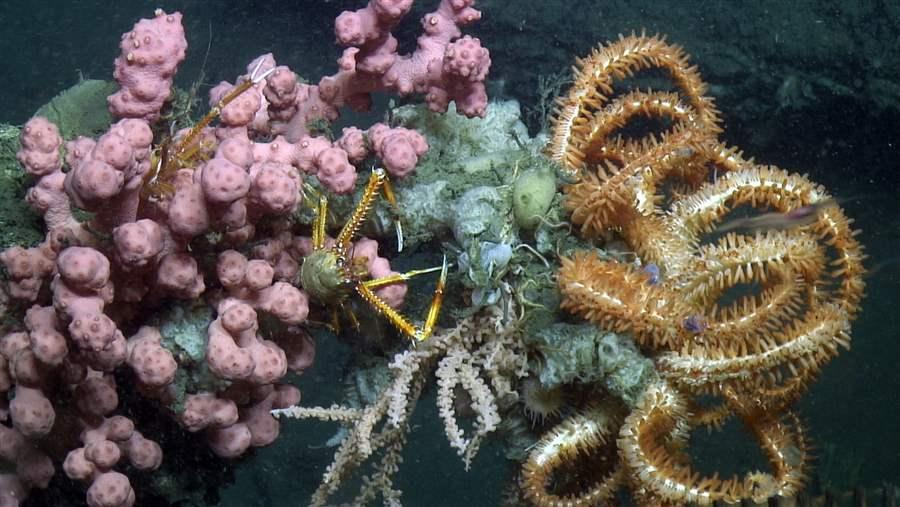 © National Oceanic and Atmospheric Administration
© National Oceanic and Atmospheric AdministrationFragile, slow-growing deep-sea corals provide habitat for an array of marine life, such as this squat lobster.
Conserve habitat
If you want to conserve fish to help keep our oceans healthy, it’s sensible to start by protecting the places they need to find shelter, eat, and reproduce. Deep-sea corals off the Atlantic coast are a prime example, a place where an immense array of fish, crabs, and squid live among otherworldly creatures such as sea spiders; the long-nosed chimera, or ghost shark; and the Dumbo octopus.
Many of the corals in these pristine areas are slow-growing, decades or even centuries old, and fragile. As industrial fishing pushes into deeper waters, it’s important to strengthen the Magnuson-Stevens Act so that we safeguard the essential habitat that sustains fish and fishing communities over the long term.
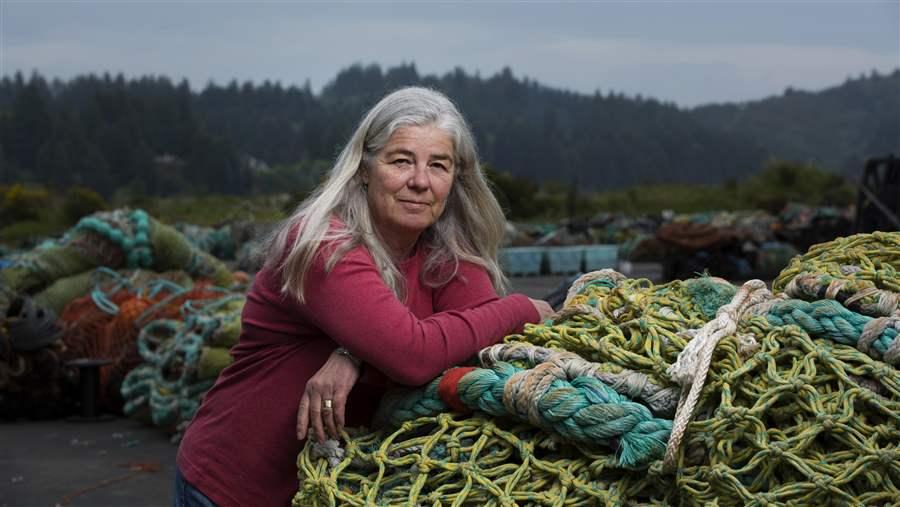 © The Pew Charitable Trusts
© The Pew Charitable TrustsSara Skamser of Newport, Oregon, works with fishermen and scientists to design and construct specialized fishing nets that catch the species fishermen want and leave the rest in the water where they belong.
Minimize waste
Almost one-fifth of all fish caught in American waters is captured unintentionally. Often, these fish, known as bycatch, are thrown overboard dead or dying. This is not only a blow to the species themselves and the ecosystems they inhabit, but it represents a huge economic cost to fishermen and coastal fishing communities.
On the Oregon coast, entrepreneur Sara Skamser responded to the collapse of groundfish in 2000 by working with fishermen and scientists to devise nets that reduce bycatch while keeping fishermen in business.
The Magnuson-Stevens Act should be strengthened to minimize bycatch nationwide. In doing so, we have a chance to harness American ingenuity to catch the species fishermen want and leave the rest in the ocean.
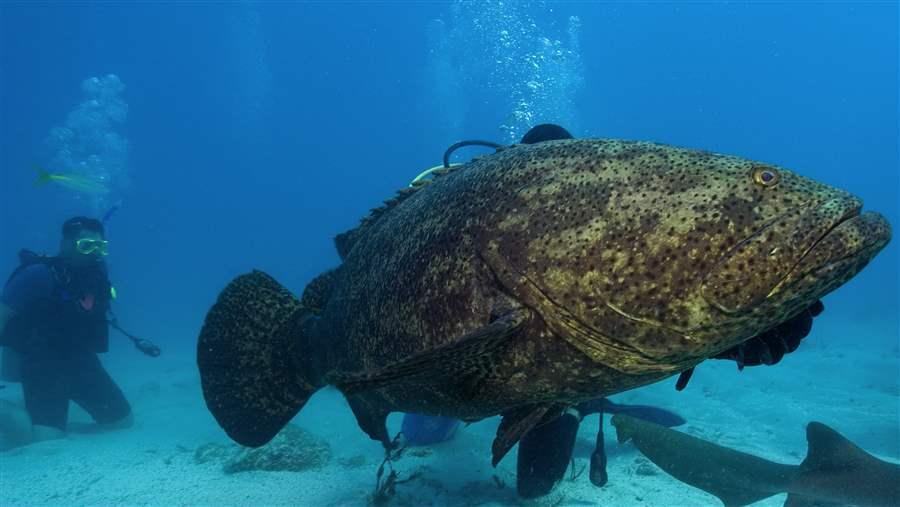 © Getty Images
© Getty ImagesGoliath grouper can weigh as much as 800 pounds and grow up to 8 feet long.
Act with precaution
Major changes are occurring in the world’s oceans. As the ocean heats up with a changing climate, many fish, including tropical species such as sunfish, are moving toward the poles and deeper areas in search of cool water. Yet for many species, it is unclear if they’ll adapt quickly enough to survive in their new territory, making it imperative for fishery managers to exercise an abundance of caution before allowing fishing to begin on a new species or in new areas.
The treatment of goliath grouper by federal and Florida fishery managers demonstrates a visionary example of precautionary management. These massive fish—some can grow up to 800 pounds—were nearly wiped out in the 1990s due to overfishing and habitat loss. Today, after fishing restrictions allowed goliath grouper populations to slowly recover in the South Atlantic and Gulf of Mexico, some people are eager to catch and keep them again.
To their credit, fishery managers are moving cautiously before making any changes to fishing rules. The managers want to first learn more about the species’ mating habits, life span, and population trends so that they can adopt management measures to minimize the risk of the species crashing again.
This commonsense approach is not the usual practice in the United States. Fishing typically is allowed to begin before fishery managers have an adequate understanding of the target species or have set any regulations on fishing it. In reauthorizing the Magnuson-Stevens Act, Congress should include language requiring that new fisheries are allowed to proceed with caution and are sustainable from the outset.
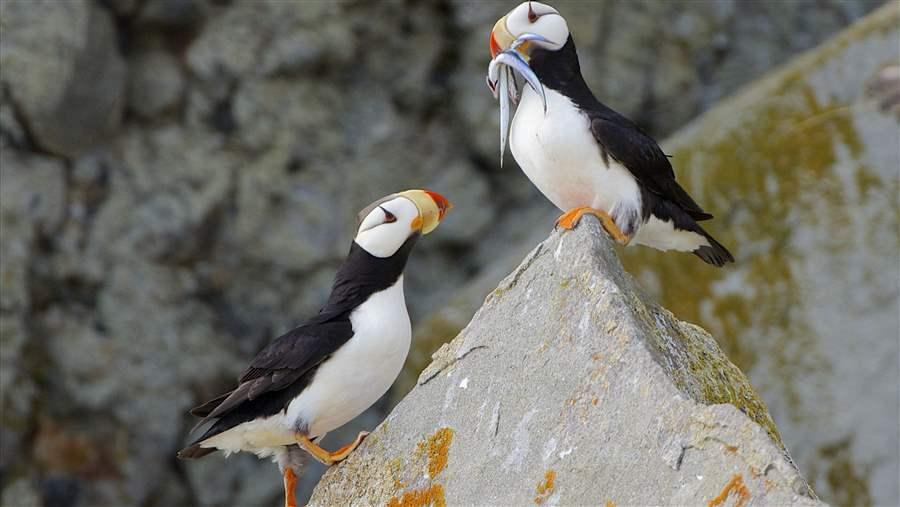 © Barrett Hedges/Getty Images
© Barrett Hedges/Getty ImagesPuffins and other seabirds provide insights into an ecosystem’s health. The birthrate for puffin chicks tracks closely with the health of small forage fish, which are their prey and also serve as food for larger fish sought by commercial fishermen.
Begin fishery ecosystem planning
The ocean environment is ever-changing, with complex interplay among plant and animal species. Yet traditional fishery management focuses on assessing and managing each fish species in isolation. This single-species approach does not fully account for such factors as pollution, habitat loss, warming waters, and offshore oil and gas development.
It’s time to take a broader view of fishery management, one that will help sustain the benefits of healthy oceans nationwide. In Alaska, which boasts some of the most robust and healthy fish populations in the United States, fishery managers track more than 100 indicators of ocean health. The resulting data inform and guide managers as they set catch limits for major fisheries such as walleye or Alaska pollock, a key ingredient in many brand-name fish sticks and fish nuggets. Similarly, Pacific managers adopted a fishery ecosystem plan in 2013 that incorporates into decisions information on how fish populations are connected to other elements in the California Current.
Congress should require regional fishery management councils to develop fishery ecosystem plans that can serve as road maps for a more comprehensive approach to management.
Congress can secure our ocean legacy
Forty years ago, Sens. Magnuson and Stevens staked a claim to U.S. ocean resources. Congress can build on that legacy by updating the Magnuson-Stevens Act to include each of the five recommendations above. This should matter whether you fish for a living or for recreation, savor locally caught seafood, or simply appreciate oceans teeming with life—from seabirds gliding between continents to whales exploring the ocean depths.
As Congress updates the Magnuson-Stevens Act, the many people who are committed to healthy oceans and coastal communities should actively engage with their political leaders to help transition to managing fish populations as part of the larger ocean environment. I hope you will join the effort.
To learn more, visit www.pewtrusts.org/healthyoceans.








